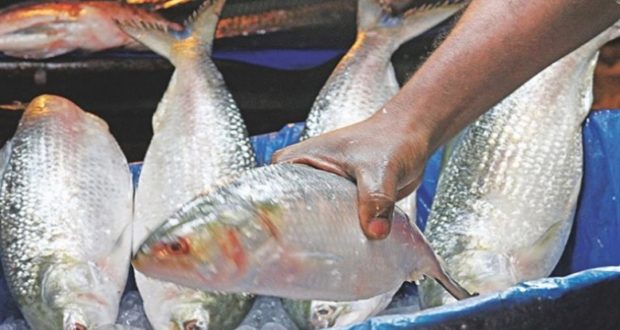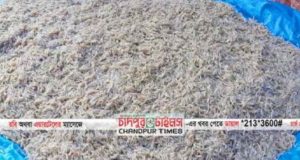Hilsa production in the country in the current financial year is 5.5 lakh MT.In the current 2019-2020 financial year, the production of hilsa in the country is likely to be 5 lakh MT. 5 lakh and 33 thousand MT of Hilsa has been produced in 2018-2019 financial year. The deadline for catching jatka from the rivers of the country is April 30.
Anisur Rahman Chandpur, chief scientific officer of Bangladesh Fisheries Research Institute, River Center Chandpur and eminent hilsa researcher of the country, informed about the possibility of increasing the production of hilsa through various measures of the government including ban on catching jatka during hilsa breeding.
In the last financial year, the production of hilsa was 5 lakh and 33 thousand MT. Where in the financial year 2002-2003 the production of Hilsa was 1 lakh and 99 thousand MT. In the current 2019-2020 financial year, it is expected to increase to 5 lakh and 50 thousand MT. Surely Hilsa production will increase in the next 5 years.
According to the data, 3 lakh and 51 thousand MT in the 2012-13 financial year. 3 lakh and 85 thousand MT in the financial year 2013-14, 3 lakh and 87 thousand MT in the financial year 2014-15. 2015-16 fiscal year 3 lakh and 95 thousand MT . 2017-18 fiscal year 4 lakh and 96 thousand MT . 5 lakh and 17 thousand in the 2016-17 financial year.
And 5 lakh and 33 thousand MT of Hilsa has been produced in 2018-2019 financial year. In a decade and a half, the production of hilsa has increased more than two and a half times.
Dr. Anisur Rahman, Chief Scientific Officer, Bangladesh Fisheries Research Institute, River Center, Chandpur and Hilsa Researcher, further said, ‘Recently, hilsa production has increased by increasing the production of egg-laying hilsa and jatka, creating opportunities for free breeding and migration of fish. It will continue to happen.’
Incidentally, according to fisheries scientists, Bangladesh Fisheries Research Institute, River Center, Chandpur has conducted a series of studies with a view to establishing the 6th sanctuary for hilsa production. Abundance of Jatkar is being observed in the tributaries of Meghna in Barisal Sadar and Hijla-Mehendiganj Upazila of Barisal.
The dimensions of all the qualities are favorable for the biodiversity of the river. An abundance of plankton can be observed in the same region which ensures an abundance of fish food. Based on the overall results of the study, it can be ascertained that the environment of the region is favorable for Jatka or Hilsa considering the abundance of Jatka, river water quality and river water plankton etc.
In order to increase the production of hilsa, it is essential to maintain tolerant production and preserve biodiversity by maintaining tolerable production by creating opportunities for free breeding and migration of fish by preventing the extraction of egg-laying hilsa and jatka. If this area is implemented in the form of a sanctuary, it is estimated that an average of 4,300 crore additional Jatka Hilsa will be added to the population every year.
The sanctuary will play an important role in enriching the rivers of Barisal region with more hilsa. Even due to its geographical location, the area is 82 km. Worthy of being declared as a sanctuary.
In this context, it is strongly recommended to declare and establish this region as the 6th sanctuary and it goes to the stage of implementation. One is a sanctuary and another one is a silver hilsa production factory. The need is just to implement consistently. Only then will the trend of hilsa resource development and sustainable production in the waters of Bangladesh be maintained and enriched with biodiversity.
Correspondent: Abdul Ghoni, April 26, 2020
 Chandpur Times Top Newspaper in Chandpur
Chandpur Times Top Newspaper in Chandpur



